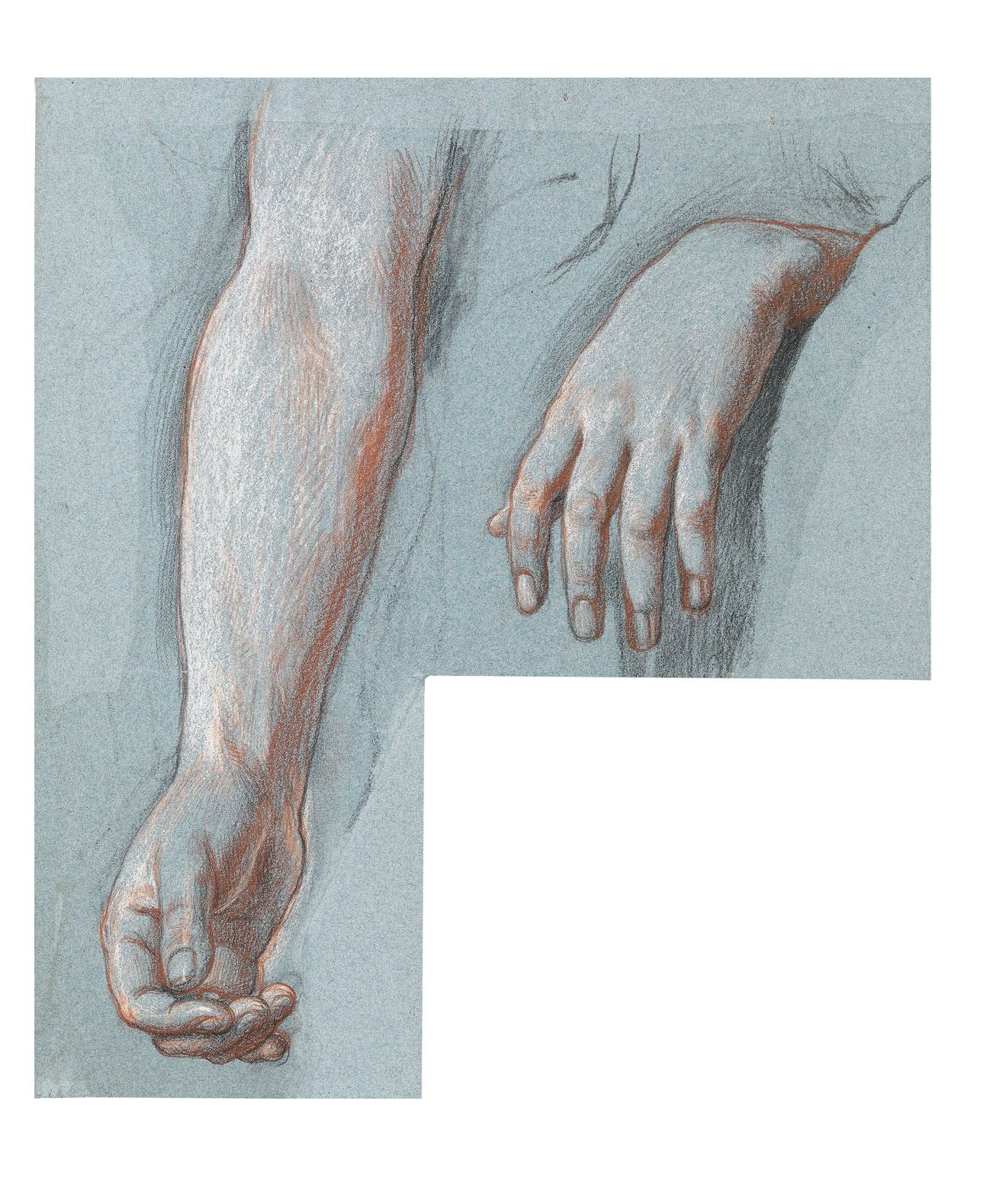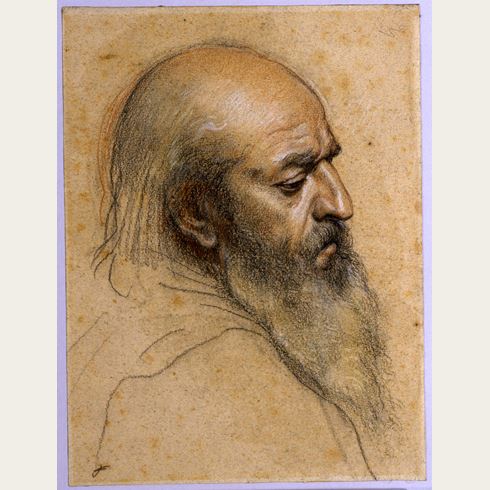Alexandre HESSE
(Paris 1806 - Paris 1879)
a. Studies of a Right Arm and Left Hand; b. Study of a Left Hand
Sold
Two drawings mounted together:
a. Black, red and white chalk on blue paper, irregularly trimmed.
A study of a thigh and leg in black chalk, heightened with touches of white chalk, on the verso.
Made up at the lower left centre.
312 x 276 mm. (12 1/4 x 10 7/8 in.) at greatest dimensions.
b. Black, red and white chalk on blue paper.
183 x 123 mm. (7 1/4 x 4 7/8 in.)
a. Black, red and white chalk on blue paper, irregularly trimmed.
A study of a thigh and leg in black chalk, heightened with touches of white chalk, on the verso.
Made up at the lower left centre.
312 x 276 mm. (12 1/4 x 10 7/8 in.) at greatest dimensions.
b. Black, red and white chalk on blue paper.
183 x 123 mm. (7 1/4 x 4 7/8 in.)
All three studies on these two drawings are preparatory for Alexandre Hesse’s painting of Saint Genevieve Distributing Bread to the Poor in the chapel of Sainte-Geneviève in the Parisian church of Saint-Séverin. The first of Hesse’s major church commissions, the decoration of the chapel, comprising four mural paintings of scenes from the life of Saint Genevieve, was completed in 1852. The studies of a right arm and a left hand are those of the fainting woman supported by a man in the centre of the composition. The study of a left hand drawn on a separate piece of paper is for the raised hand of the figure at the left edge of the composition. Two other studies for this same figure, one of his head and another of his hand, were on the Paris art market in 1979.
A stylistically comparable study of a right hand, drawn in pastel and chalk on blue paper, is in the Louvre, and is preparatory for the hand of Louis XIV in Hesse’s painting of Louis XIV Establishing the French Navy in the Palais de Luxembourg in Paris. Another, similar study of an arm and hand, also drawn in black, red and white chalks on blue paper, was on the art market in London in 1980.
A stylistically comparable study of a right hand, drawn in pastel and chalk on blue paper, is in the Louvre, and is preparatory for the hand of Louis XIV in Hesse’s painting of Louis XIV Establishing the French Navy in the Palais de Luxembourg in Paris. Another, similar study of an arm and hand, also drawn in black, red and white chalks on blue paper, was on the art market in London in 1980.
The son and nephew of artists, Alexandre Hesse entered the Ecole des Beaux-Arts in 1821. In 1830 he made his first visit to Italy, and his experiences in Venice inspired his painting of The Funeral of Titian, exhibited at his Salon debut in 1833, where it won a first-class medal. He returned to Italy in the same year, again visiting Venice, where he made several copies after the work of Titian, Tintoretto and Veronese; artists who were to be a particular influence on his own work. In 1836 he received a State commission for a painting of The Body of Henry V Brought Back to the Louvre after his Assassination, intended for the Galerie d’Apollon of the Louvre and today at Versailles, as are two further paintings from French history, commissioned for the Salle des Croisades.
Hesse lived and worked in Rome between 1842 and 1847, and on his return devoted much of his later career to providing paintings for chapels in Parisian churches, including Saint-Séverin, Saint-Sulpice and Saint-Gervais. He also worked at provincial churches and decorated the ceiling of the Palais de la Bourse in Lyon between 1868 and 1870. Hesse continued to exhibit at the Salons until 1861, and in 1867 was nominated to succeed Ingres at to the Institut de France. His last significant commission, for the decoration of a chapel in the Parisian church of Saint-Germain-des-Pres, was left unfinished at his death.






